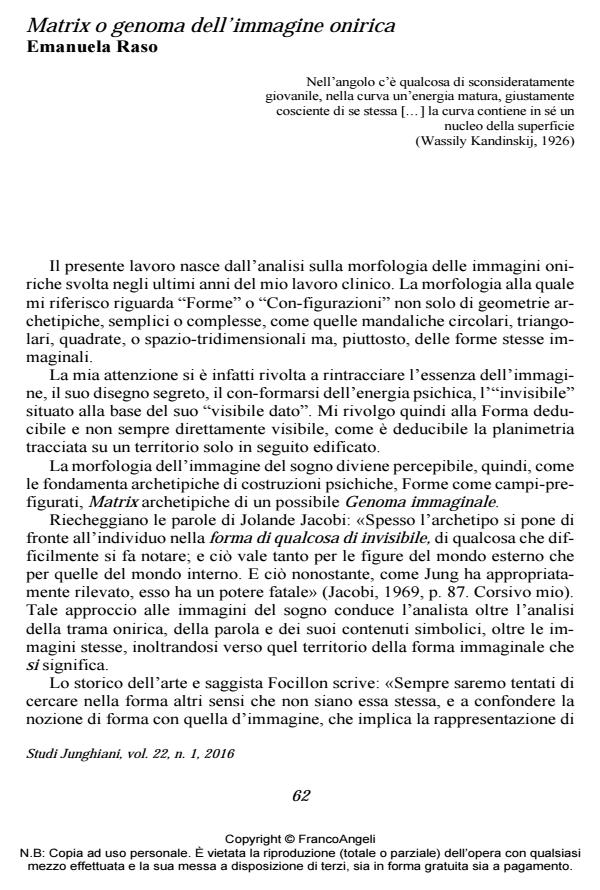Matrix or the genome of dream images
Journal title STUDI JUNGHIANI
Author/s Emanuela Raso
Publishing Year 2016 Issue 2016/43
Language Italian Pages 22 P. 62-83 File size 287 KB
DOI 10.3280/JUN2016-043004
DOI is like a bar code for intellectual property: to have more infomation
click here
Below, you can see the article first page
If you want to buy this article in PDF format, you can do it, following the instructions to buy download credits

FrancoAngeli is member of Publishers International Linking Association, Inc (PILA), a not-for-profit association which run the CrossRef service enabling links to and from online scholarly content.
The Author dwells upon the imaginal morphologies of dreams as "con-figurations" or pre-figured fields of psychic energy, archetypal matrices of the psychic constructions of the visible. In her research about Forms, she uses art and geometry: both through those artists who have dedicated their lives to seek the sense of form, and through those who have studied the geometry of fractals as a possible mathematic model of natural forms. She suggests that the collective unconscious, as a container of archetypes, could be the psychic part of a broader biological aspect of the mitochondrial genome, the latter being the heir of the memory of life and, as such, a possible "imaginal genome".
Keywords: Dream, forms, imaginal morphogenetic fields, archetypical matrix, genome, psychoid, psychic energy, fractals
Emanuela Raso, Matrix o genoma dell’immagine onirica in "STUDI JUNGHIANI" 43/2016, pp 62-83, DOI: 10.3280/JUN2016-043004